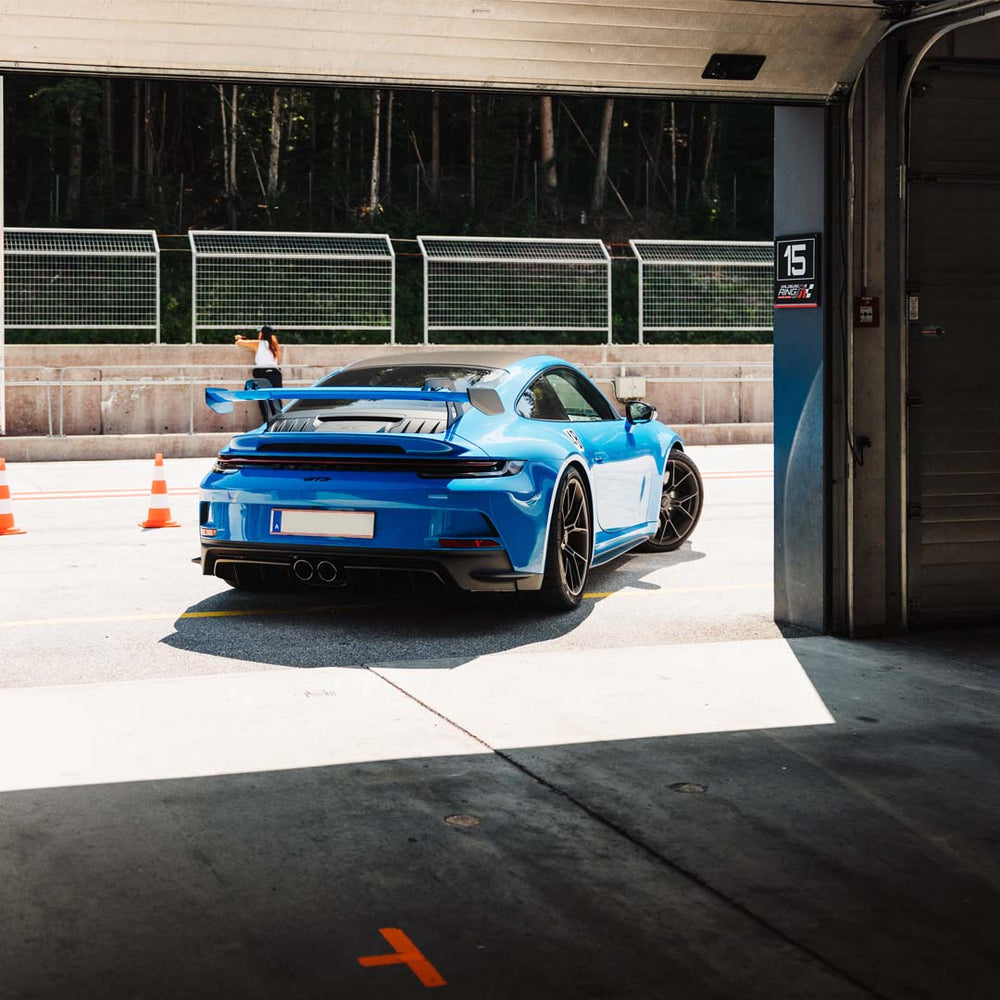Preparing for your first Trackday? It doesn't have to be scary!
Although after years of semi-professional karting I was no stranger to racetracks, I remember the first time driving on a track in my own car as being one of the most exciting moments ever. Shortly after my 18th birthday I took delivery of my first car and suggested one of my best friends to drive to the Nordschleife and do a couple of laps during the 'Touristenfahrten'. The notorious free driving sessions for everyone and almost 'everything' (From track prepared Porsches to a bus full of pensioners).
Without any preparation, we drove down to the track and did some laps. With a stock car, lack of experience and a hell of a lot of respect we didn't really go fast. So in the end, our complete 'unpreparedness' didn't do any harm.
A track day, however, is different. With about 3 - 4 hours of driving time, your car naturally will experience more stress and wear than usual. I have to admit that I am neither the kind of person who was overly cautious with my car nor do I have any technical talent to fix cars on the move. This caught me out quite badly several times throughout the years.
Worst of all, most of my breakdowns were totally avoidable almost every single time and simply due to failing to prepare the car in advance:

That doesn't have to be you!
It's quite safe to say that a well-maintained car will make it easily through a track day. So after years of experience and several fails, we compiled a list of the most important points to consider before you embark on your first track day adventure.
Rule #1 - Give yourself enough time to prepare
I cannot stress this enough. There is nothing worse than eagerly anticipating a day of on-track action, only to find out a week before that your car needs some fixing.
"If I learned one thing over the years when it comes to track days is that what can go wrong, will go wrong. Even if it's a minor fix, motorsport parts either have long delivery times or you won't find a shop having the part you need in stock when you need it most. Worst of all, something may go wrong while fixing the broken part and delay the entire process; Leaving you stressed and potentially missing the track day."
So, a couple of weeks before, run through the most important parts of your car:
I. CHECK YOUR BRAKES
If there is one part going through significantly more stress during a track day compared to your regular B-Road hoon, it's the brakes.
PADS:
Are your pads still good? Remember that they (if you don’t use a trailer) have to get you to the track, survive some fast laps and get you back home! (This one of the points that caught me out before!)
DISCS:
What about your discs? Check your discs thoroughly and if possible, from the in- and outside. Are there any visible cracks or damages? If you frequently attend track days, some surface cracks will be normal, especially if you have drilled discs. However, if the cracks join together and/or reach the end of the disc, it's usually time to change them. If you're unsure, we advise you to speak to a specialist.
BRAKE FLUID:
This one is an easy fix. It simply shouldn't be older than one year in case you plan to attend a track day and/or frequently do so.
II. CHECK YOUR TYRES
Often times, people seem to forget that the tyres are their only connection to the road. The engine, suspension and brakes can only be as good as the four black rubber things connecting them to the road.
While definitely not a must, it's worth considering mounting semi-slick tyres if you plan on regularly participating in our track days. They will be more consistent than road tyres and handle higher temperatures better. Nevertheless, this doesn't mean you shouldn't or cannot drive on road tyres. However be reminded, that they usually need a bit of time cooling down after a couple of hotlaps to keep on delivering a good performance.
Similar to the brakes, you should also consider that (except you using a trailer to transport your car) the tyres need to bring you to the track, handle a day of hot laps as well as safely bringing you home.
III. CHECK YOUR ENGINE
OIL:
When it comes to the engine, the most important thing is clearly oil. First of all, check the general oil level. For track use, it should be at the upper end of the scale. BE AWARE: Too much oil can harm the engine as well.
A good guideline is to keep the oil level between 3/4 and 4/4 throughout the entire day.
OTHER PARTS:
Every car has its weak spots. My MINI, for example, needs some special attention regarding the pulley belt as well as a couple of cheap sensors which are rather are easy to replace but can destroy an entire day if they go wrong.
It's highly recommended that you scout some communities regarding your car and check which parts are prone to fail during some heavy track use.
Rule #2 - Create a packing list
We created a list of must-pack things for a track day. Check it out!
Rule #3 - Enjoy the ride!
If you checked your car and prepared well, there is not much you should worry about during our track days. Just enjoy the day! In any way, we’re always there to support you!





